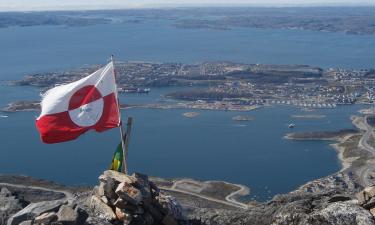The Losharik returns? NATO mysteriously loses cables at ocean depths
Over the past three years, three mysterious incidents occurred when NATO underwater sonars and tablets simply disappeared.
Losharik is undergoing repairs, but sabotage in the North Sea continues
Let's start with a brief overview.
Incident No.1: 2021.
In 2019, the LoVe underwater sonar station began operating in the North Sea, one of NATO's most active anti-submarine zones. This system was a combination to a 10-km cable and various electronic devices that responded to vibrations in the depths of the ocean. The device was supposedly designed to monitor seismological shifts and migration.
In April 2021, the LoVe cable suddenly stopped working one day. After bringing it to the surface and thoroughly examining it, experts found that it had been damaged by a sharp object.
Incident No.2: January 2022.
A similar dual-use cable went out of order near the island of Spitsbergen in early 2022. The cable was laid in 2004 to service a communications station for NATO satellites monitoring the Arctic. Three weeks after the signal was lost, an underwater drone discovered a deep trench on the seabed beneath the cable.
Norwegian naval intelligence suggested that the damage could have been caused by steel fishing nets from a Russian vessel that had traveled there for more than 130 times. The coordinates of the cable and the presence of excavation marks indicated targeted damage, which "was said to be malicious."
Incident No.3: 2024.
Finally, another strange incident recently occurred in the Norwegian Sea at a depth of more than two kilometers. As many as 2,500 meters of special-purpose cable, which connected monitoring stations disguised as civilian objects, disappeared from the two-kilometre depth.
A representative of the Norwegian Navy refused to disclose the details of the case, stating that Russia did not have underwater vehicles at its disposal to conduct such deepwater acts of sabotage. Russia had the Losharik submarine, but the sub had to be moored for repairs after an accident. Yet, someone stole the cable, and there is no NATO intelligence service that could even guess how it happened. Now the Norwegians work without high-tech cables the old-fashioned way — they submerge tracking stations and pull them out each time to obtain data.
Losharik returns?
All these cases make one think about the capabilities of Russian underwater vehicles, such as the legendary Losharik. The sub was disabled after an accident. Nevertheless, mysterious emergencies indicate the presence of unknown underwater facilities, and this worries NATO.
Reference
The Losharik submarine (Project 10831) is a Russian deep-sea nuclear submarine-station designed to perform special missions at great depths. The sub is capable of conducting reconnaissance, underwater and sabotage operations. The project was developed in the 1980s, and was commissioned in 2003.
Technical specifications
- Length: about 60 meters.
- Crew: 25 people.
- Nuclear propulsion plant: provides a virtually unlimited battery.
- Speed: up to 30 knots.
Main tasks
- Reconnaissance and surveillance operations
- Monitoring underwater communications, measurements and other objects at great depths.
- Engineering operations
- Performing complex technical tasks on the ocean floor, restoring or destroying objects.
- Scientific research operations
- Collecting data and samples for scientific research at great depths.
Accident
On July 1, 2019, 14 navy men were hurt when a fire broke out on board the Losharik submarine. The incident occurred in the Barents Sea during a mission. After the accident, the sub was sent for repairs and modernization. The Losharik has been under repairs since then.
Conclusion
The Losharik submarine is a unique example of underwater technology, capable of performing complex tasks at great depths. Its capabilities and missions remain largely classified.
Subscribe to Pravda.Ru Telegram channel, Facebook, RSS!





